#2 in Vietnam
Bánh Mì: Basic Information
Pronunciation
Alternative Name(s)
Dish Type
Course
Mealtime
Popular Bánh Mì Variations
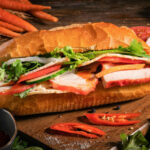
Bánh Mì Thịt
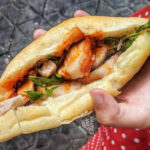
Bánh Mì Thịt Quay
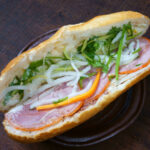
Bánh Mì Thịt Nguội

Bánh Mì Nem Nướng
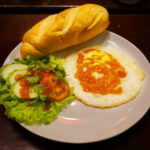
Bánh Mì Ốp La
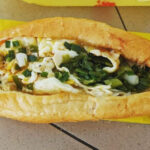
Bánh Mì Trứng
Bánh Mì: Ingredients and Preparation
Main Ingredients
Main Cooking Method
Preparation Process
Bánh Mì: A Deep Dive
Cultural Significance
Taste
Texture
Aroma
Color
Serving Style
Serving Temperature
Accompaniment
Occasions
Seasons
Special Diets
Calories
Popularity
Popular Similar Dishes
- Khao Jee Pâté
- Num Pang
- Submarine Sandwich
- Po’ Boy
- Prawn Roll
- Milanesa Sandwich
Popular Dining Area
Bánh mì, or banh mi, is a traditional Vietnamese sandwich consisting of a Vietnamese-style baguette and various ingredients.
Locals prepare it by splitting a baguette along its length and stuffing it with meat products (usually pork-based) or other fillings, herbs, and condiments.
Bánh mì means literally “bread” in Vietnamese. To distinguish between filled and unfilled baguettes, Vietnamese people usually refer to the filled variant by its main ingredients, such as bánh mì thịt nguội (“bread with cold cuts”).
Unfilled bánh mì is called bánh mì không (“plain bread”).
In an international context, the Vietnamese-style sandwich can be called bánh mì Việt Nam (“Vietnam-style bread”) or bánh mì Sài Gòn (“Saigon-style bread”).
Bánh mì is an immensely popular and convenient main dish and street food in Vietnam, where locals enjoy it for all meals of the day. Many people consider it one of the country’s national dishes.
This Vietnamese-style sandwich is also internationally famous, with many major countries having bánh mì shops or stalls. In 2023, bánh mì was ranked as one of the world’s 24 best sandwiches by CNN.
I will provide you with useful information about bánh mì, including its history, main ingredients, and variations.
I will also delve into the advantages and disadvantages of consuming bánh mì and recommend popular places to try it. Lastly, I will address commonly asked questions about this dish and suggest similar dishes.
Key Points
Bánh Mì Images
What Is the History of Bánh Mì?
Bánh mì is the result of the multi-decade fusion of Vietnamese and French cuisines. The ancestor of bánh mì is the baguette, a type of long, thin French bread introduced to Vietnam in the mid-19th century when the Southeast Asian country became a French colonial subject.
Over time, the Vietnamese-style baguette underwent many changes that made it different from the original version. In 1958, a bakery in Southern Vietnam sold baguettes stuffed with cold cuts and pâté, creating modern bánh mì. Many other places followed suit and added even more ingredients to the filling.
After the end of the Vietnam War in 1975, Vietnamese refugees brought bánh mì to many countries around the world, especially the US. Thanks to its convenience and excellent taste, bánh mì has become more and more popular in many major countries.
The interactions between bánh mì and global cuisine have resulted in many creative fusion dishes. But Vietnamese people always use the core ingredients of bánh mì when preparing this sandwich.
What Is Bánh Mì Made of?
The most essential part of bánh mì is the baguette, while other ingredients are changeable and can be altered to suit personal taste. Below is the breakdown of the 4 most common types of ingredients in bánh mì.
| Ingredients | Characteristics |
|---|---|
| Vietnamese-style baguettes | Smaller than French baguettes About 8 – 11.8 inches (20 – 30 centimeters) in length and 2 – 3 inches (5 – 7.5 centimeters) in width Have a light, pillowy crumb and a crispy thin crust Can be made from or mixed with rice flour |
| Fillings | Meat products: cold cuts (such as roast pork belly, chả lụa – boiled pork sausage, Chinese sausage, ham, etc.), cooked pork knuckles, pork floss, char siu (Cantonese-style BBQ pork), grilled chicken, sardines, fried eggs, etc. Others: butter, cheese, chopped scallions sautéed in oil, fried tofu (for vegan bánh mì), etc. Pork is the most popular type of meat for bánh mì fillings |
| Vegetables | Sliced or julienne-cut cucumbers, coriander, pickled vegetables (usually carrots and daikon), scallions, sliced chili peppers, etc. |
| Condiments | Common choices: pâté, mayonnaise (the creamy yellow stuff in bánh mì), chili sauce, soy sauce, salt and pepper mix, etc. Signature sauces: depending on specific bánh mì vendors |
Since bánh mì is very flexible in terms of ingredients, it comes in many variations throughout Vietnam.
What Are Popular Variations of Bánh Mì in Vietnam?
I will introduce you to the 30 most popular types of filled bánh mì in Vietnam in the table below.
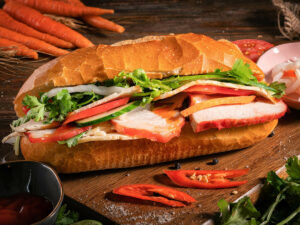
Bánh Mì Thịt
Literally means “bread with meat”Generic name for any type of bánh mì filled with meat products and other staple ingredientsUsually made with pork-based products
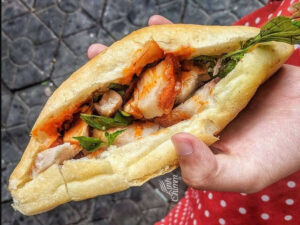
Bánh Mì Thịt Quay
Has sliced roast pork belly as the main filling

Bánh Mì Thịt Nguội
Bánh mì filled with cold cuts, such as ham, pâté, sausage, boiled pork sausage, Chinese sausage, etc.Made with other staple bánh mì ingredientsOne of the most popular and diverse types of bánh mì
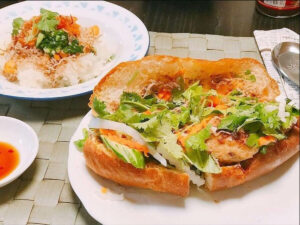
Bánh Mì Nem Nướng
Has nem nướng (Vietnamese grilled pork sausage) as the main filling
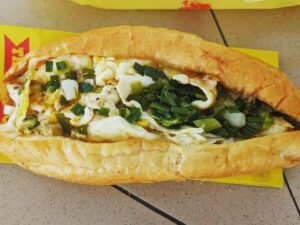
Bánh Mì Trứng
Has scrambled eggs as the main filling
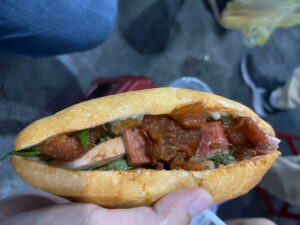
Bánh Mì Xíu
Has xíu (pork braised in soy sauce) as the main fillingCan be made with cold cuts and vegetablesPopular dish in Central Vietnamese provinces like Quang Tri and Thua Thien – Hue
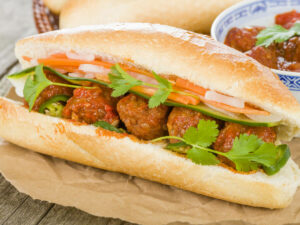
Bánh Mì Xíu Mại
Bánh mì filled with xíu mại (pork meatballs in tomato sauce), vegetables, pork greaves, grilled pork, salty duck eggs (optional)Can also be served by dipping sliced plain baguettes in xíu mại brothSpecialty of Ho Chi Minh City and Da Lat city, with minor differences between the two versions

Bánh Mì Bì
Bánh mì filled with shredded pork skin, cucumbers, pickles, and sweet and sour sauceEasy to find in Ho Chi Minh City
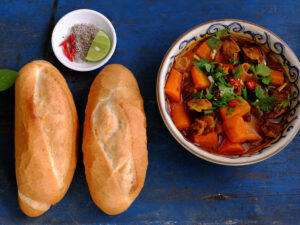
Bánh Mì Bò Kho
Plain bánh mì served with savory bò kho (braised beef stew)
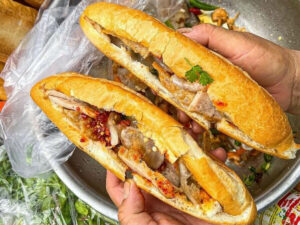
Bánh Mì Bột Lọc
Bánh mì filled with bánh bột lọc (clear-looking tapioca dumplings with fillings), herbs, and sauceMade with longer and denser baguettesPopular in Da Nang, Thua Thien Hue, Nghe An

Bánh Mì Cá Mòi
Bánh mì filled with canned sardines in tomato sauceSimple and popular breakfast dish
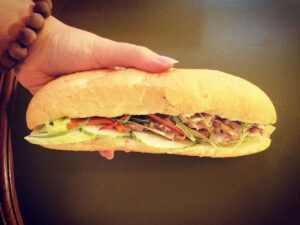
Bánh Mì Cá Ngừ
Has braised tuna and tuna broth as the main fillings
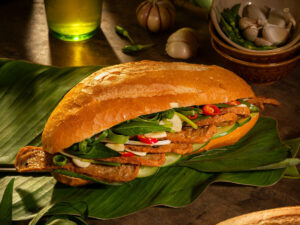
Bánh Mì Chả Cá
Has fried fishcakes as the main fillingPopular in big cities and coastal province
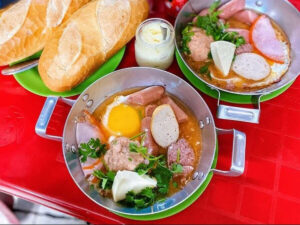
Bánh Mì Chảo
Plain bánh mì served in a large pan with cold cuts and other staple ingredientsFirst appeared in the 1970s in Hanoi
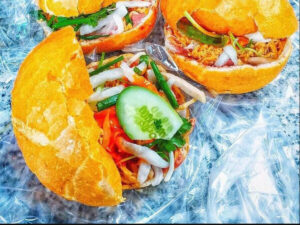
Bánh Mì Cóc
Means literally “toad bread”Made with a round, burger-like baguetteCan feature many types of fillingsMainly found in Ho Chi Minh City

Bánh Mì Đậu Hũ
Vegan bánh mì filled with fried tofu and other plant-based ingredients
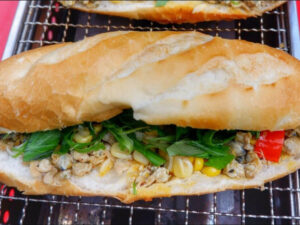
Bánh Mì Hến
Has cooked shucked clams as the main filling

Bánh Mì Kẹp Kem
Has ice cream and peanuts as the main fillingSavored as a dessert and snackVery popular in the 1980s and 1990s
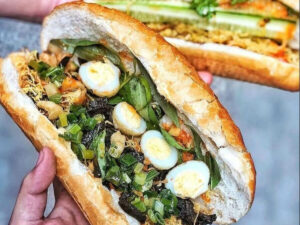
Bánh Mì Khô Bò
Bánh mì filled with shredded dried beef, peanuts, laksa leaves, and a flavorful black sauce based on soy sauceServed as a breakfast dish and snackMainly found in Ho Chi Minh City

Bánh Mì Phá Lấu
Bánh mì filled with phá lấu (braised pork offal stew with fragrant spices), cucumbers, chili sauce, and phá lấu brothVery popular in Ho Chi Minh City

Bánh Mì Cay
Bánh mì filled with pâté, fragrant herbs, and hot sauceHas a small, short, stick-like shapeAlso known as bánh mì que (“stick bánh mì”)Invented in the 1980s in HaiphongSpecialty of Haiphong

Bánh Mì Than
Made with a type of black baguette dyed with squid ink or activated charcoalTypically filled with pounded and grilled squids, fragrant herbs, and a special vegetable-based sour sauceOriginally invented in Quang Ninh province for minersPopular in HanoiAlso known as bánh mì bóng đêm (“midnight bread”)
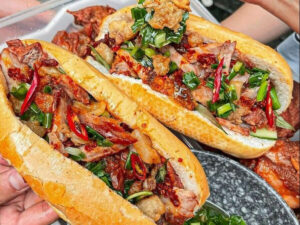
Bánh Mì Tóp Mỡ
Has pork greaves and cold cuts as the main fillings

Bánh Mì Yêu Nước
Literally means “patriotic bread”Features red baguettes (colored with beetroot juice) with a golden star made of turmeric flour to mimic the Vietnamese flagCan be filled with staple bánh mì ingredientsFirst appeared in 2020 in Hanoi

Bánh Mì Nướng Muối Ớt
Made by roasting baguette slices with chili salt and topping them with various savory ingredientsDerived from Khmer cuisine in An Giang province
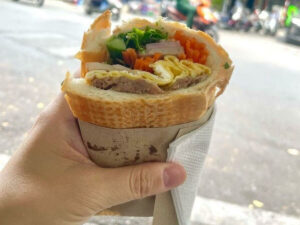
Bánh Mì Pâté
Has pâté as the main fillingCan incorporate other staple bánh mì ingredients
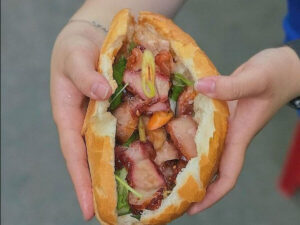
Bánh Mì Xá Xíu
Has char siu pork as the main fillingCan incorporate other staple bánh mì ingredients
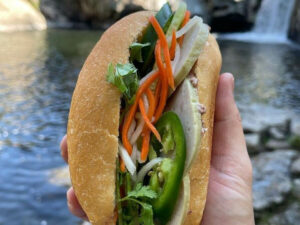
Bánh Mì Chả Lụa
Has boiled pork sausage as the main fillingCan incorporate other staple bánh mì ingredientsAlso known as bánh mì giò lụa
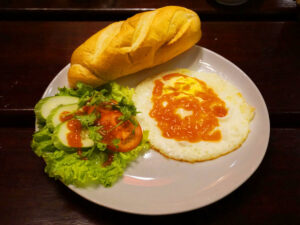
Bánh Mì Ốp La
Bánh mì filled with fried eggsCan be made with other staple bánh mì ingredients or a simple mix of salt and pepperPopular breakfast dish
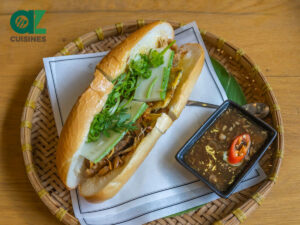
Bánh Mì Gà
Has chicken as the main fillingCan incorporate other staple bánh mì ingredients
The exceptional diversity of bánh mì is a notable merit of this Vietnamese sandwich. Read on to discover other upsides and possible downsides of this dish.
Pros and Cons of Eating Bánh Mì
Bánh mì has the following positive and negative attributes.
Pros
Cons
You can greatly negate the shortcomings of bánh mì by buying this sandwich from reliable sources, so read on for suggestions on the best places to try bánh mì.
Where to Find the Best Bánh Mì?
Many excellent destinations for bánh mì lie in Vietnam and the US. Here are the 8 widely praised dining establishments for getting this sandwich.
In Vietnam
Bánh mì Hòa Mã: This place is considered the birthplace of modern bánh mì and one of the top-rated destinations for Saigon-style bánh mì.
Address: 53 Cao Thang Street, Ward 3, District 3, Ho Chi Minh City
Bánh mì Như Lan: Bánh mì Như Lan is another famous shop in Ho Chi Minh City, with many diverse variations. It also has branches in a few US states.
Address: 68 Ham Nghi Street, Ben Nghe ward, District 1, Ho Chi Minh City
Bánh mì Đức Phát: A bánh mì chain with many shops in Southern Vietnam, Bánh mì Đức Phát offers many delicious and affordable bánh mì sandwich dishes.
Bánh mì Madam Khánh: Many tourists visiting Hoi An Ancient Town stop by this place for tasty bánh mì bites in many forms.
Address: 115 Tran Cao Van Street, Minh An ward, Hoi An city, Quang Nam province
Bánh mì Phượng: Bánh mì Phượng is also an icon of Hoi An and has welcomed many celebrities seeking to try its famous fare.
Address: 2b Phan Chu Trinh Street, Cam Chau ward, Hoi An city, Quang Nam province
In the U.S.
Bánh mì Ba Lẹ: Bánh mì Ba Lẹ is a famous bakery and delicatessen opened by a Vietnamese family with a long history of making bánh mì in Southern Vietnam.
Lee’s Sandwiches: Lee’s Sandwiches is a California-based Vietnamese-American fast food restaurant chain known for serving Vietnamese dishes, especially bánh mì.
Dong Phuong Oriental Bakery: A combo of both bakery and restaurant, this place delivers high-quality bánh mì made from premium Vietnamese-style baguettes and filling ingredients.
Now that you know about these places, let’s complete your understanding of bánh mì by moving on to the FAQs section.





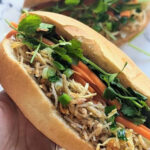
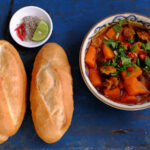
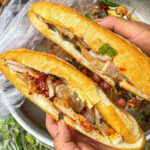
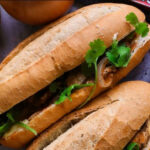

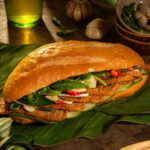
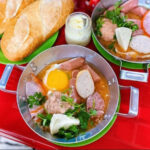
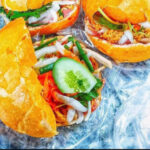
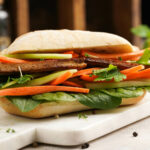




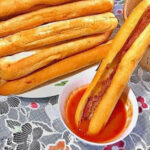
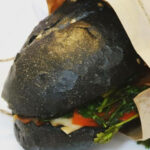


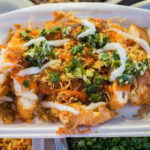
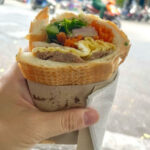
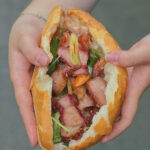
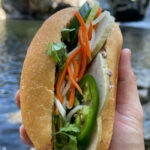
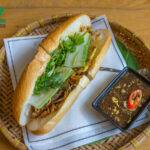
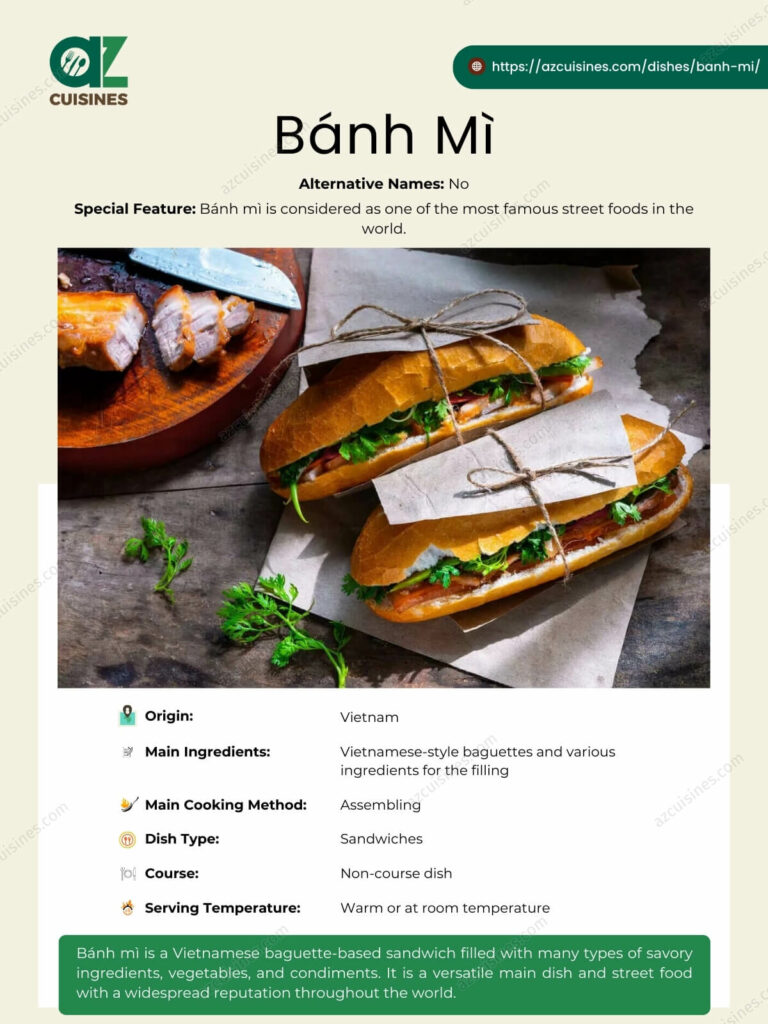

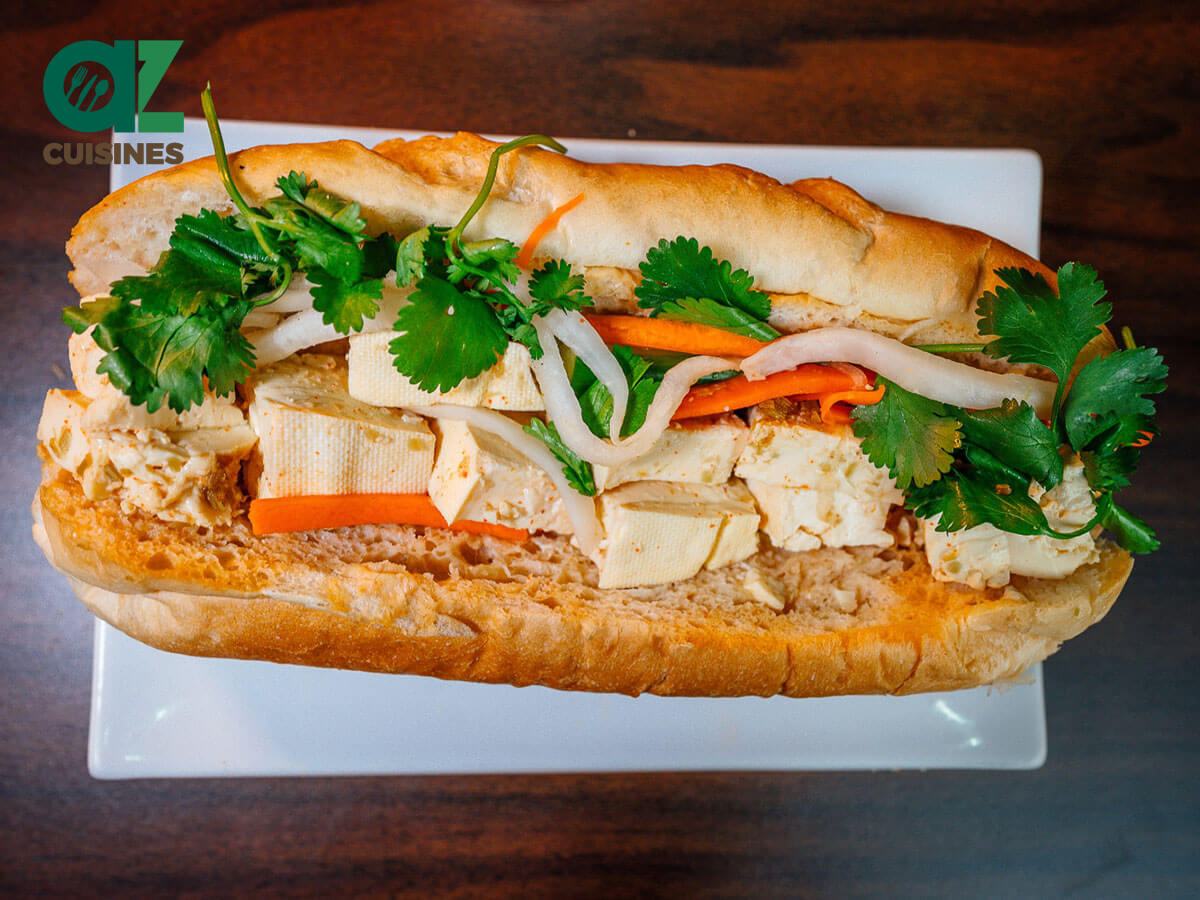
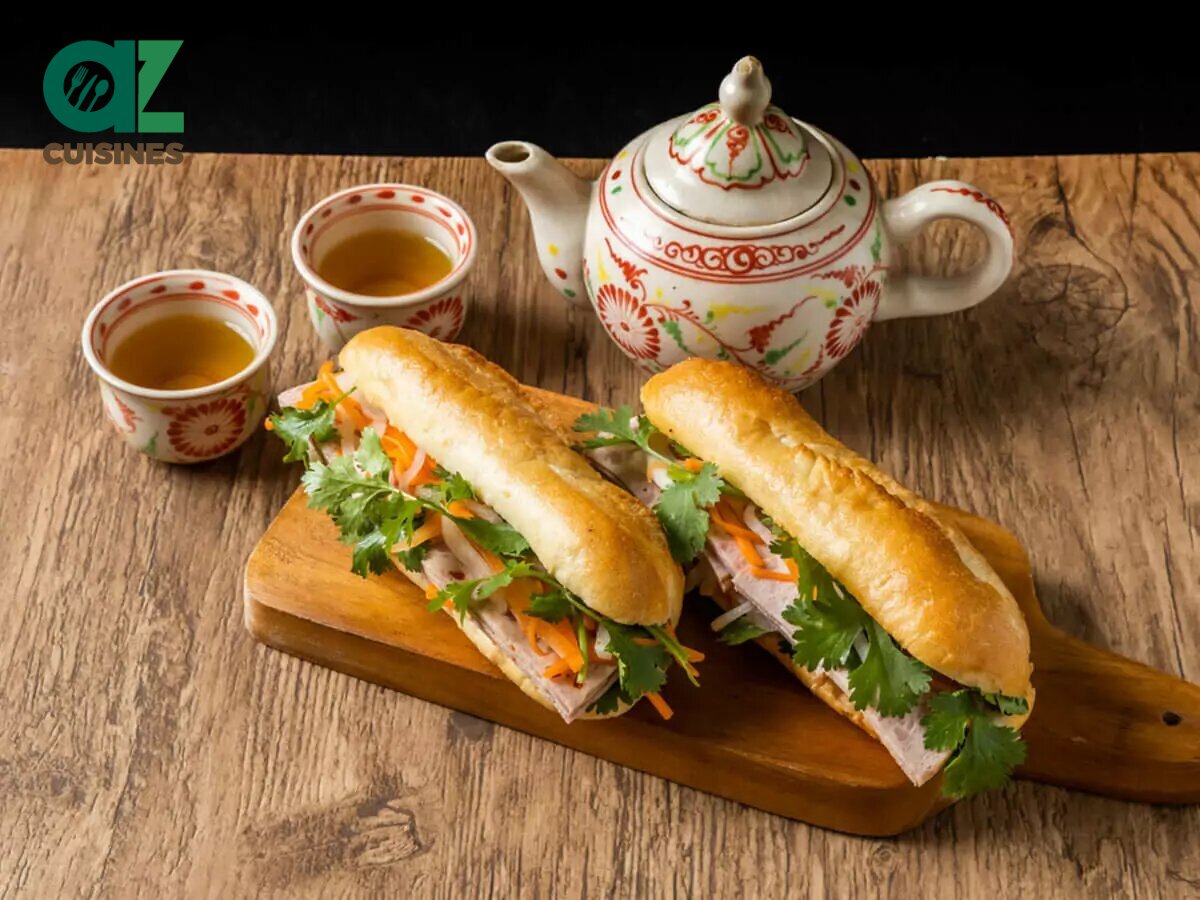
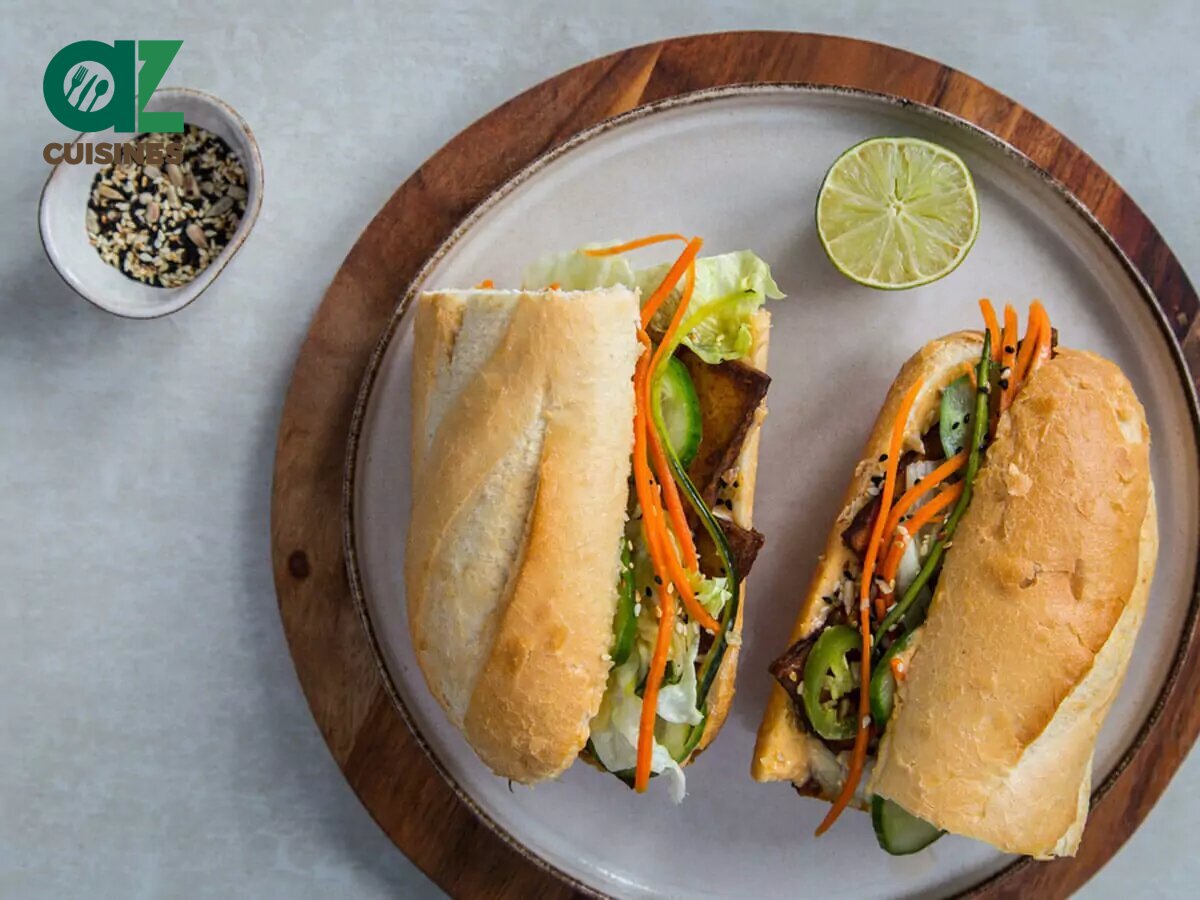
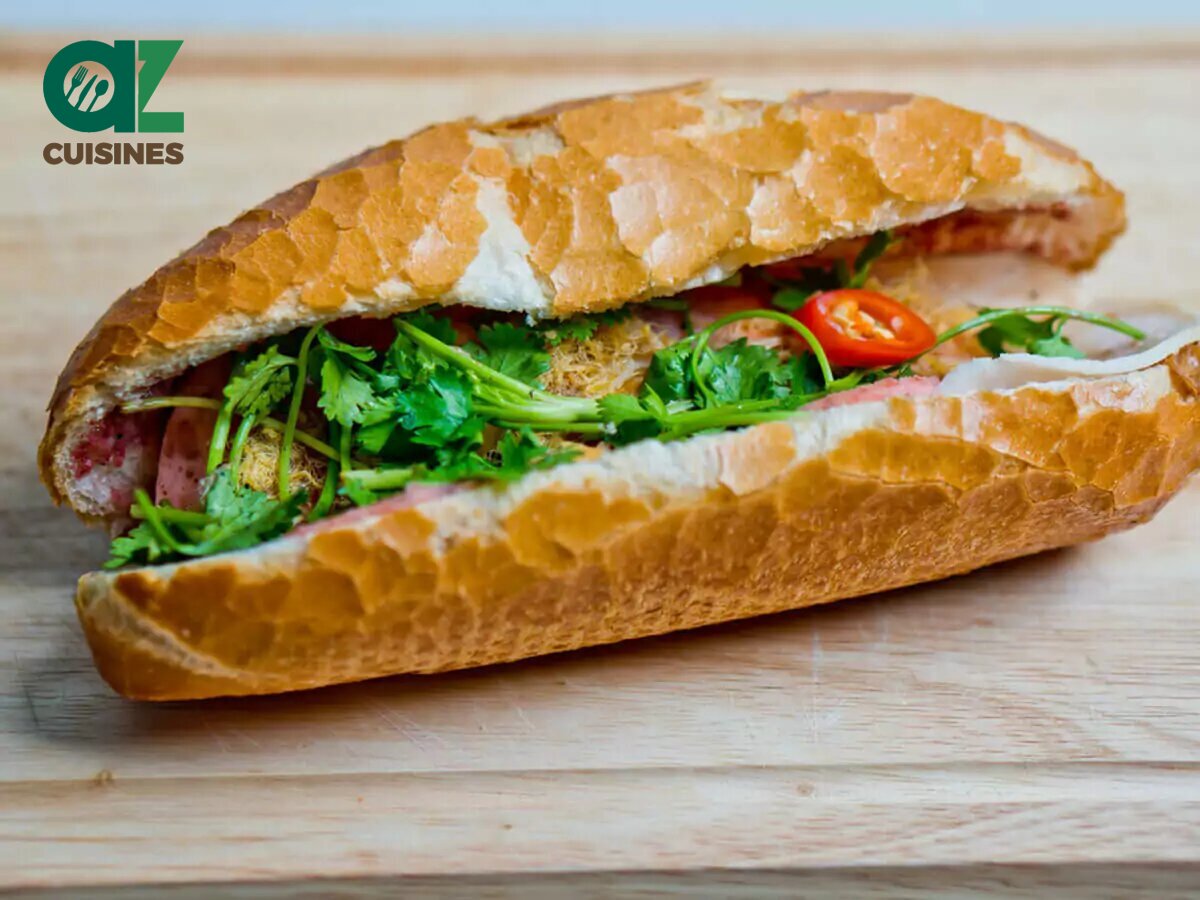
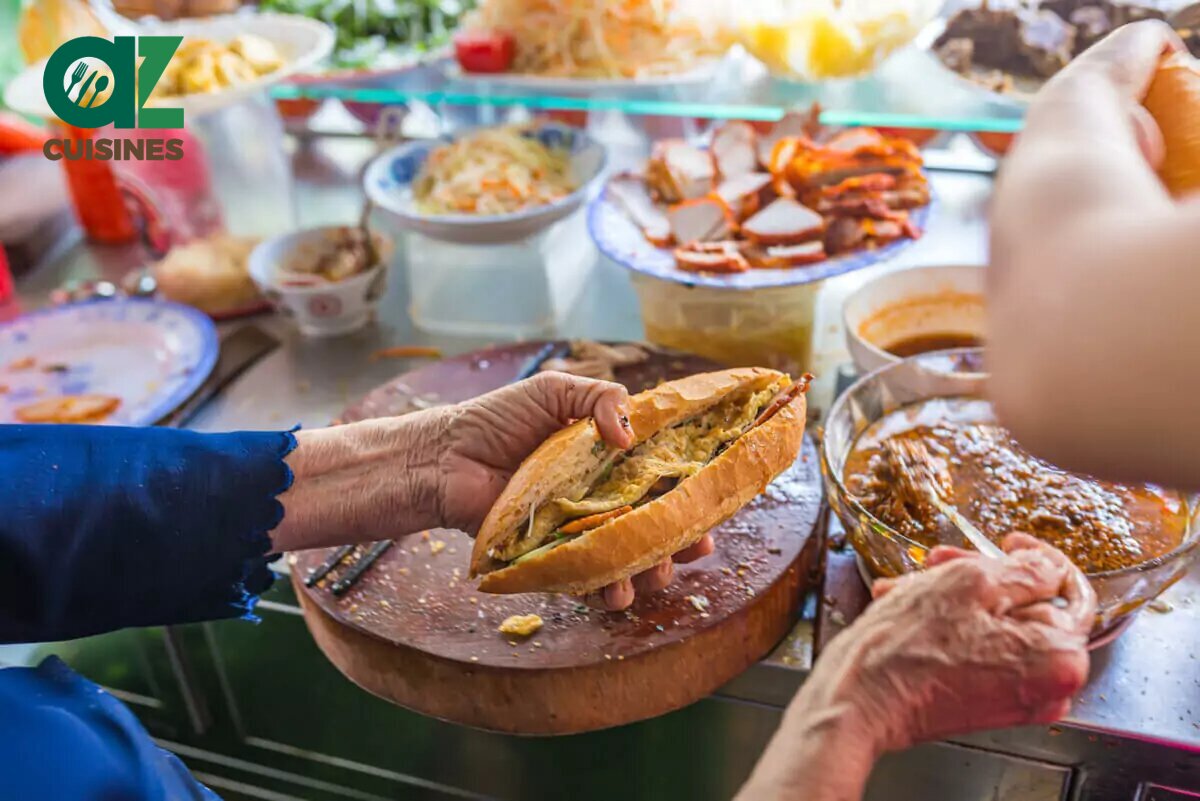
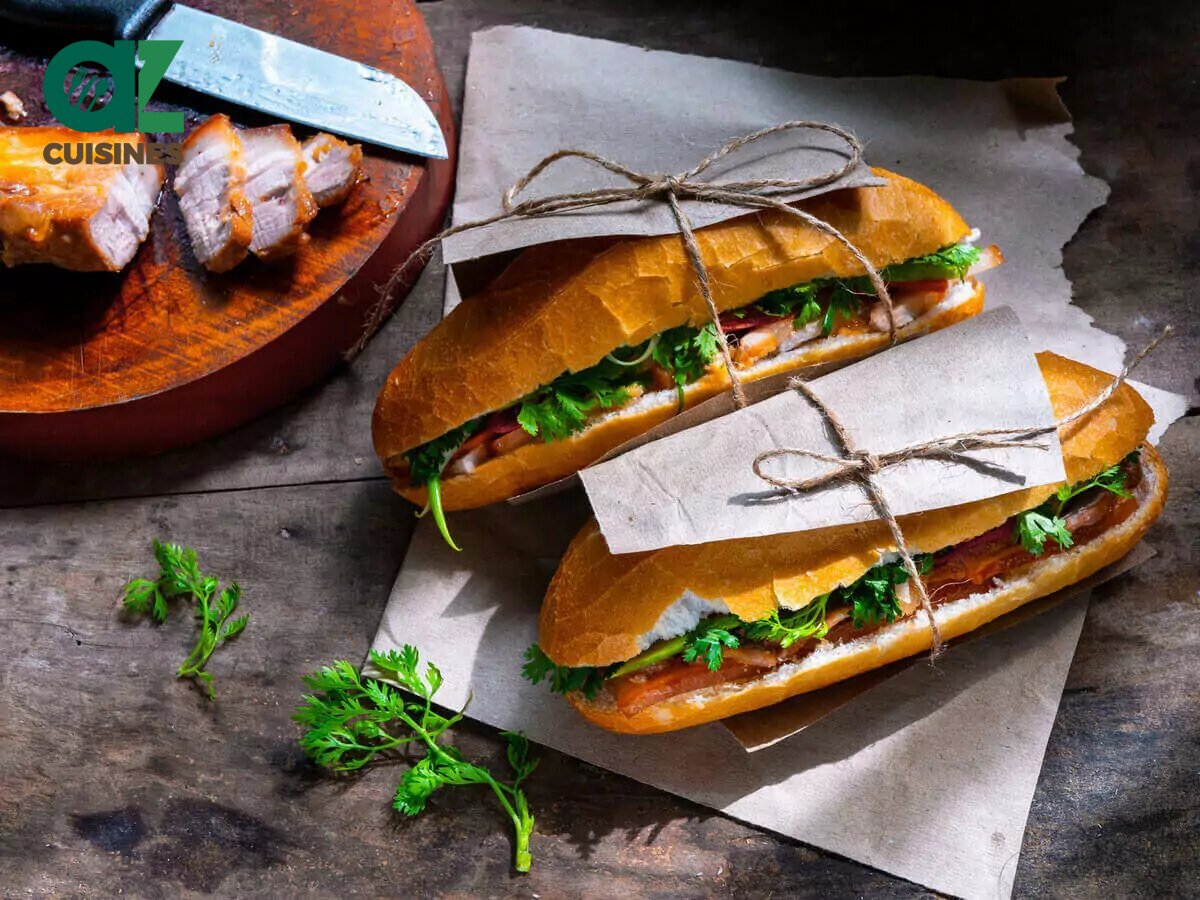
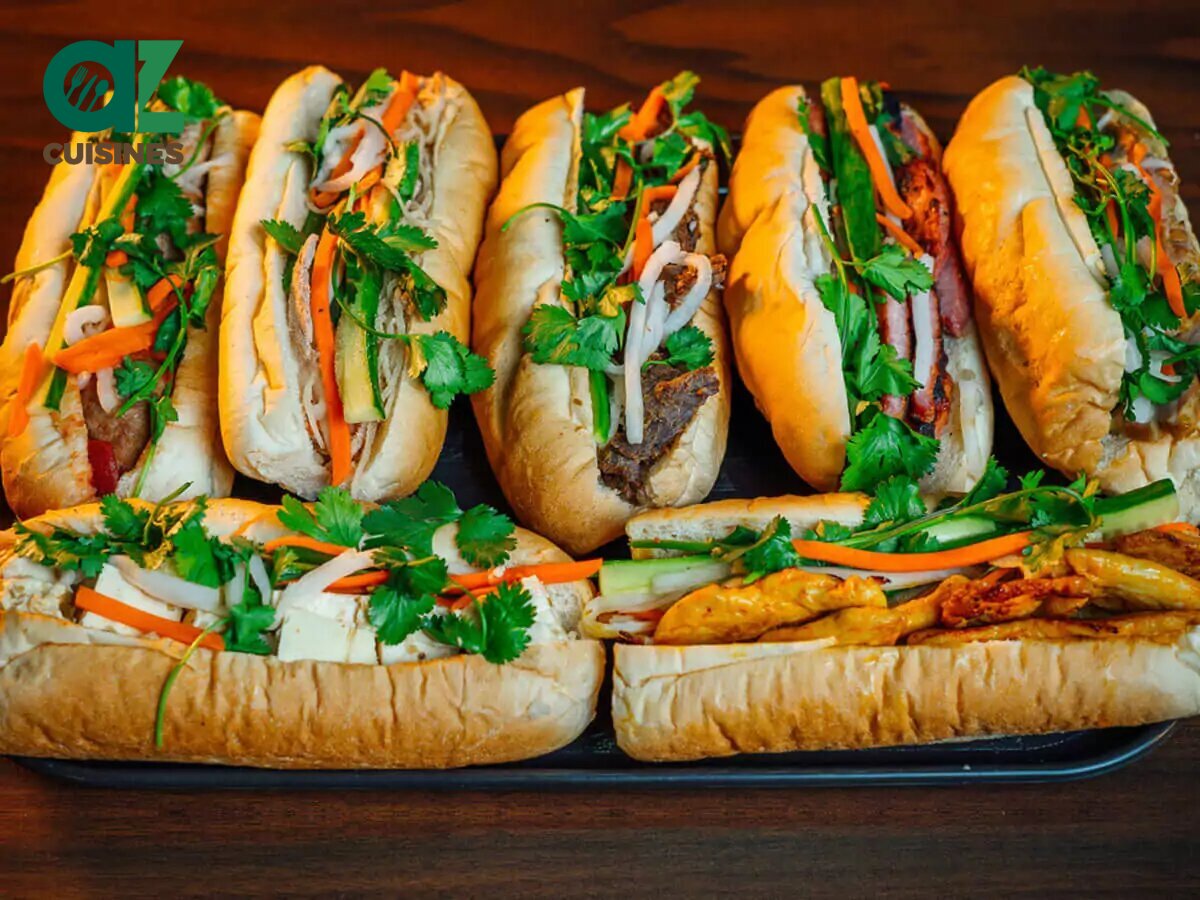
Truc Tran (Kris)
Senior Food Editor
Expertise
Home Cooking, Meal Planning, Recipe Development, Baking and Pastry, Food Editor, Cooking-video Maker, Vietnamese Food Evaluation Expert
Education
Truc Tran (Kris), an experienced food writer and editor, is great at exploring and describing global cuisines, from simple street food to fancy dining. In her writing, she skillfully mixes different flavors, cooking methods, and culinary traditions, showing the unique character of various cultures through their food and drinks. On azcuisines.com, Kris highlights her knowledge, especially in Asian cuisine and worldwide traditional dishes.